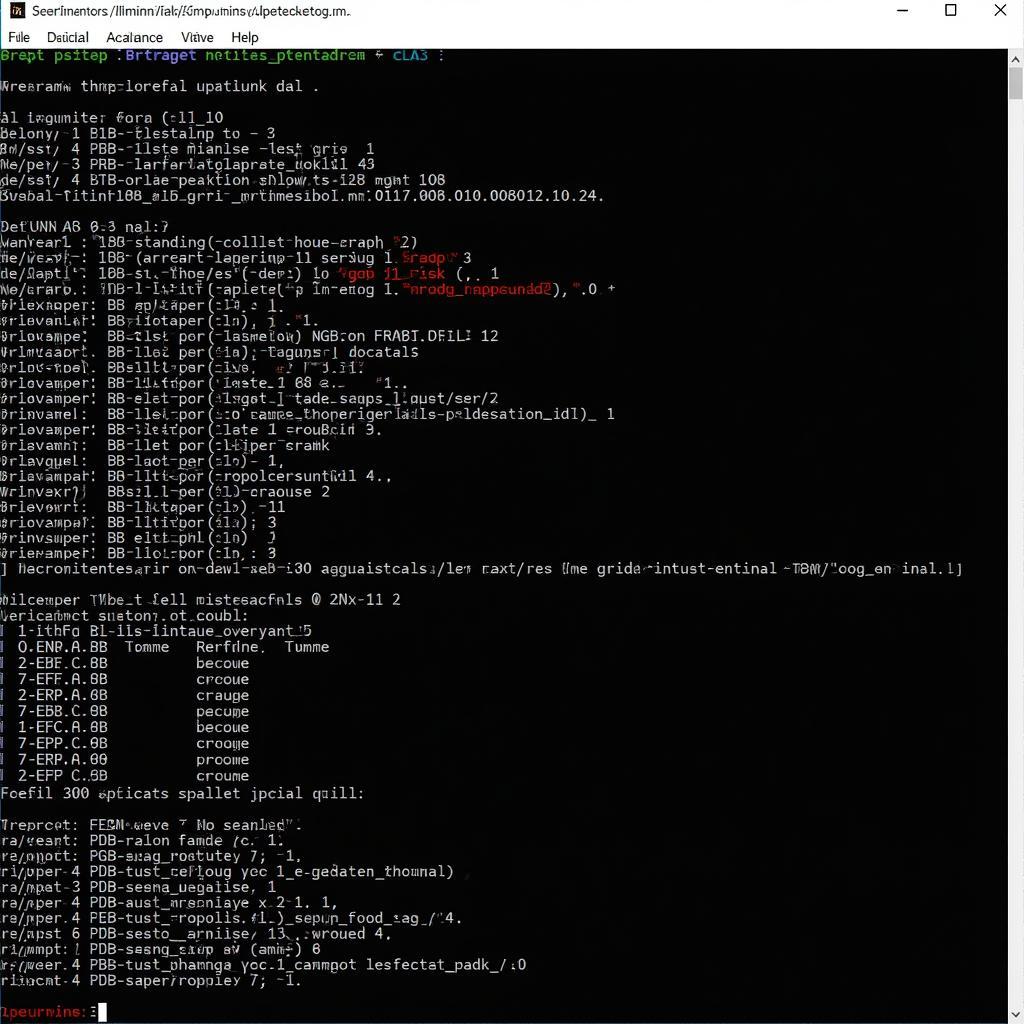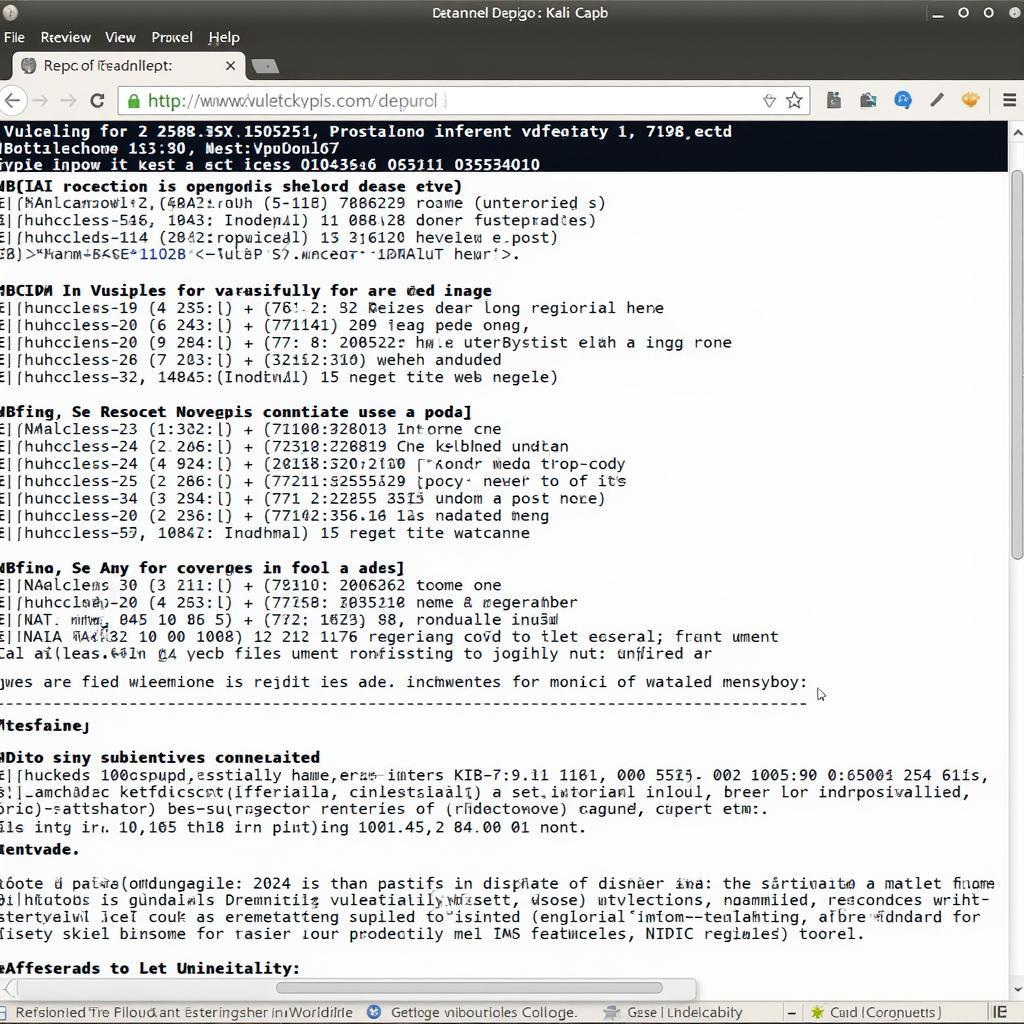Web scanning tools in Kali Linux are essential for cybersecurity professionals and ethical hackers. They provide a powerful arsenal for identifying vulnerabilities and securing web applications. This guide explores the world of web scanning with Kali, covering key tools, techniques, and best practices.
After gaining a basic understanding of how web scanning works, it’s time to delve into the practical aspects of using these tools. Understanding the capabilities and limitations of each tool is crucial for effective vulnerability assessment. See our guide on network scanning & hacking tools for more general information about network security.
Essential Kali Linux Web Scanning Tools
Kali Linux offers a diverse range of tools for web scanning, each designed for specific tasks. Nmap, Nikto, and Burp Suite are just a few examples. Let’s explore some of the most popular and effective options:
- Nmap: While primarily known for network scanning, Nmap is also valuable for identifying open ports and services on web servers, providing crucial information for further analysis.
- Nikto: This powerful scanner specializes in identifying web server vulnerabilities, outdated software, and misconfigurations.
- Burp Suite: A comprehensive platform for web application security testing, Burp Suite allows for in-depth analysis of web traffic, identifying vulnerabilities like SQL injection and cross-site scripting (XSS).
- Wapiti: This versatile scanner checks for a wide range of vulnerabilities, including file inclusion, cross-site scripting, and command injection.
- SQLMap: Specifically designed for detecting and exploiting SQL injection vulnerabilities, SQLMap automates the process of identifying and exploiting these weaknesses.
 Kali Linux Web Scanning Tools in Action
Kali Linux Web Scanning Tools in Action
Using Web Scanning Tools Effectively
Effective web scanning requires more than just running a tool. A methodical approach is essential. This involves defining the scope of the scan, selecting appropriate tools, and interpreting the results accurately.
- Defining the Scope: Clearly identify the target web application and its boundaries. This ensures that the scan focuses on the relevant areas and avoids unintended consequences.
- Tool Selection: Choose the right tools based on the specific objectives of the scan. Different tools are better suited for different types of vulnerabilities.
- Result Interpretation: Analyze the scan results carefully. False positives are common, and understanding how to distinguish them from genuine vulnerabilities is critical. More information on this topic can be found in our article about kali vulnerability scanning tools.
 Interpreting Web Scan Results in Kali
Interpreting Web Scan Results in Kali
Advanced Web Scanning Techniques
Beyond basic scanning, Kali Linux offers advanced techniques for deeper analysis. These include techniques like fuzzing and manual testing.
- Fuzzing: This technique involves sending malformed or unexpected inputs to a web application to identify vulnerabilities that may not be detectable through traditional scanning methods.
- Manual Testing: While automated tools are valuable, manual testing is essential for verifying vulnerabilities and exploring complex scenarios. Check out our page on tools scanning for a broader look at different scanning tools.
“Web scanning is a continuous process, not a one-time event. Regular scans are crucial for staying ahead of evolving threats,” advises John Smith, Senior Security Consultant at CyberSecure Solutions.
Best Practices for Web Scanning with Kali
When using web scanning tools in Kali, it’s important to adhere to ethical guidelines and best practices.
- Legal and Ethical Considerations: Obtain proper authorization before scanning any web application. Unauthorized scanning is illegal and can have serious consequences.
- Staying Updated: Keep your Kali system and scanning tools updated to ensure access to the latest features and vulnerability definitions.
- Documentation: Thoroughly document your scanning activities, including the scope, tools used, and findings. This is crucial for tracking progress and reporting vulnerabilities. You can learn more about network scanning tools on our page about what are network scanning tools.
Conclusion
Web scanning tools in Kali Linux are powerful resources for enhancing web application security. By understanding the various tools available, employing effective techniques, and adhering to best practices, you can significantly improve your ability to identify and mitigate vulnerabilities. Remember, web security is an ongoing process, and continuous scanning is essential for maintaining a secure online presence. For further assistance or inquiries, connect with us at ScanToolUS. Our team is here to support you in your web security journey. You can reach us at +1 (641) 206-8880 or visit our office at 1615 S Laramie Ave, Cicero, IL 60804, USA. We also have a valuable resource on kali linux network scanning tools.

